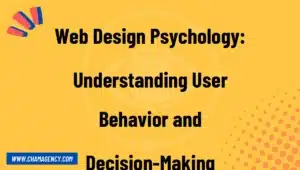User-Centered Design (UCD) has become the cornerstone of successful website development, emphasizing the significance of prioritizing the audience throughout the design process. This approach not only ensures a website’s usability but also enhances the overall user experience (UX). In this article, we’ll explore the principles, benefits, challenges, and implementation strategies of User-Centered Design, shedding light on how it contributes to the success of websites and businesses.
Introduction
In the fast-paced digital era, websites serve as the face of businesses, making it imperative to create platforms that resonate with users. User-Centered Design, often abbreviated as UCD, is a methodology that revolves around putting the audience at the forefront of the design process. It goes beyond aesthetics, focusing on usability, accessibility, and the overall experience users have when interacting with a website.
Understanding User-Centered Design
Definition of UCD
At its core, UCD involves designing products or services with the end-users in mind. This human-centric approach ensures that the final result meets the needs, preferences, and expectations of the target audience.
Core Principles of UCD
The principles of UCD revolve around empathy, iteration, and collaboration. Designers continually refine their creations based on user feedback, creating a dynamic and responsive design process.
Focus on Usability and User Experience (UX)
Usability and UX are the cornerstones of UCD. A usable website is intuitive and easy to navigate, while a positive UX considers the emotional aspect of user interaction.
Benefits of User-Centered Design
Improved User Satisfaction
When users find a website easy to use and navigate, their satisfaction increases. This positive experience fosters a connection between the user and the brand.
Higher Conversion Rates
A user-centric design is more likely to guide visitors through the conversion funnel, resulting in increased sales, sign-ups, or any other desired actions.
Enhanced Brand Loyalty
Websites that prioritize user needs and preferences build trust and loyalty. Users are more likely to return to a site that understands and meets their expectations.
Key Elements of User-Centered Design
User Research
Before embarking on the design journey, thorough user research is conducted. This includes understanding the target audience, their behaviors, and pain points.
Persona Development
Creating user personas helps designers empathize with their audience. Personas are fictional characters representing different user types, ensuring a holistic approach to design.
Prototyping and Testing
Design is an iterative process. Prototyping allows for quick testing of concepts, ensuring that the final product is user-friendly and effective.
Iterative Design Process
UCD embraces an iterative approach, with constant refinement based on user feedback. This cyclical process leads to continuous improvement.
Implementing User-Centered Design in Website Development
Involving Users in the Design Process
Direct user involvement is crucial. From initial brainstorming sessions to usability testing, including users in the design process ensures that the final product aligns with their expectations.
Conducting Usability Testing
Usability testing involves observing real users interacting with prototypes or the actual website. This provides invaluable insights into areas that may need improvement.
Adapting to User Feedback
User feedback should not only be collected but also incorporated into the design. Adapting to user suggestions demonstrates a commitment to meeting their needs.
Common Challenges in User-Centered Design
Balancing User Needs and Business Goals
One of the challenges in UCD is finding the delicate balance between addressing user needs and aligning the design with the business objectives.
Overcoming Budget Constraints
Investing in thorough user research and iterative design processes can be challenging with limited budgets. However, the long-term benefits often outweigh the initial costs.
Addressing Diverse User Preferences
Users have varied preferences and needs. Designing a website that caters to a diverse audience requires a nuanced and inclusive approach.
Tools and Techniques for User Research
Surveys and Interviews
Gathering direct insights from users through surveys and interviews helps in understanding their preferences, behaviors, and expectations.
Analytics and Heatmaps
Analyzing website analytics and heatmaps provides valuable data on user interactions, allowing designers to make informed decisions.
A/B Testing
Testing different design variations through A/B testing helps identify the most effective elements based on user response.
User-Centered Design and SEO
The Intersection of UCD and Search Engine Optimization
Harmonizing UCD with SEO involves creating content that not only appeals to users but also aligns with search engine algorithms.
Creating Content that Appeals to Both Users and Search Engines
Striking the right balance between user-friendly content and SEO optimization is crucial for maximizing visibility and user engagement.
Mobile Responsiveness in User-Centered Design
Importance of Responsive Design
With the increasing use of mobile devices, responsive design ensures a seamless and consistent user experience across various screen sizes.
Mobile-Friendly User Interfaces
Designing mobile-friendly interfaces involves simplifying navigation and optimizing content for smaller screens, enhancing overall usability.
Measuring the Success of User-Centered Design
Key Performance Indicators (KPIs)
Identifying and monitoring key performance indicators, such as bounce rates, conversion rates, and user satisfaction scores, helps gauge the success of UCD.
Continuous Improvement and Adaptation
UCD is an ongoing process. Regularly assessing user feedback and performance metrics allows for continuous improvement and adaptation to changing user needs.
Future Trends in User-Centered Design
AI and Machine Learning Integration
The integration of artificial intelligence and machine learning is expected to play a significant role in personalizing user experiences and predicting user behaviors.
Personalization in Web Design
Tailoring content and interactions based on user preferences is a growing trend, enhancing engagement and satisfaction.
Collaboration Between Designers and Developers in UCD
Breaking Down Silos
Effective collaboration between designers and developers is crucial for a seamless integration of design principles and technical implementation.
Ensuring Seamless Communication
Clear and open communication between design and development teams prevents misunderstandings and ensures the cohesive execution of UCD principles.
Educating Stakeholders on the Value of User-Centered Design
Making a Business Case for UCD
Effectively communicating the long-term benefits of UCD, such as improved user satisfaction and increased conversion rates, is essential in gaining stakeholder support.
Demonstrating Long-Term Benefits
Showcasing case studies and tangible outcomes of UCD implementation can persuade stakeholders of its lasting positive impact on the business.
Conclusion
In conclusion, User-Centered Design is not just a methodology but a philosophy that places the audience at the heart of website development. By prioritizing usability, understanding user preferences, and embracing iterative processes, businesses can create websites that not only attract but also retain a satisfied user base. As we look to the future, the integration of emerging technologies and a continued commitment to user-centric principles will shape the landscape of web design.
FAQs (Frequently Asked Questions)
- Why is User-Centered Design important in website development?
- User-Centered Design ensures that websites meet the needs and preferences of the audience, resulting in improved satisfaction and engagement.
- How can businesses overcome budget constraints in implementing UCD?
- While initial costs may be a concern, the long-term benefits of UCD often justify the investment. Prioritize key stages and gradually expand.
- What role does SEO play in User-Centered Design?
- SEO and UCD can work hand-in-hand by creating content that is both user-friendly and optimized for search engines, maximizing visibility.
- How do you measure the success of User-Centered Design?
- Key performance indicators (KPIs) such as conversion rates, bounce rates, and user satisfaction scores help gauge the success of UCD.
- What are the future trends in User-Centered Design?
- AI and machine learning integration, as well as an increased focus on personalized web design, are expected to shape the future of UCD.









